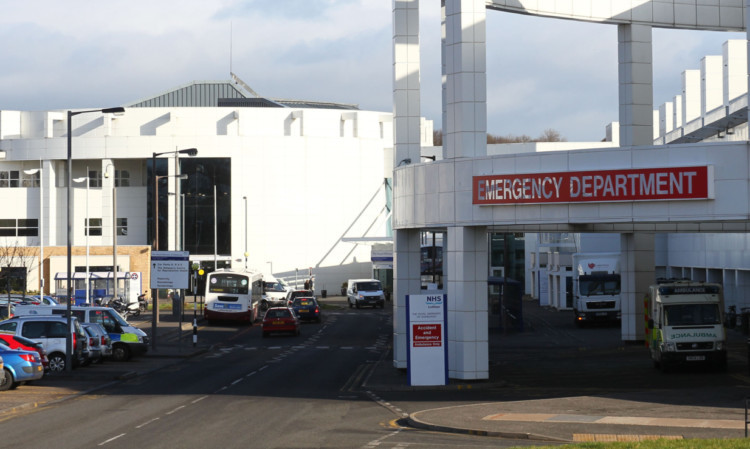
“Drunk tanks” where people are sent to sober up could be trialled in city centres and hospitals.
Angry taxpayers have backed nurses calling for a ban on disruptive drunk patients who clog up vital A&E units.
Earlier this week Royal College of Nursing (RCN) delegates told the professional body’s annual conference a tidal wave of inebriated people are flooding the nation’s accident units, leaving them unable to function properly.
Some hardliners proposed special units or recovery areas for drunk people to free up frontline services.
These calls have been fully endorsed by a hard-hitting, exclusive poll commissioned by The Sunday Post.
We can reveal an overwhelming 77.5% of those surveyed want to see drunks kept away from A&E departments and treated in separate “booze tanks”.
More than half want to see charges levied on those who arrive at the life-saving facilities drunk and two-thirds want to see people who have either consumed too much alcohol or behaved inappropriately towards staff, slapped with on-the-spot fines.
The poll’s findings were underlined by an undercover snapshot of the nation’s A&E units which saw Sunday Post reporters visit eight of the UK’s busiest facilities on Thursday night.
At three A&E wards scenes of alcohol-fuelled carnage that many would deem unacceptable were witnessed by our reporters.
In one shocking episode, a police riot van escorted an ambulance carrying a man so drunk he could barely speak, to Paisley’s Royal Alexandra Hospital.
Strapped to a trolley, the half-dressed patient tried to free himself but was stopped by a police officer, sparking a flailing protest.
Our probe follows last week’s RCN annual conference in Liverpool, where Dr Peter Carter, the chief executive and general secretary, said “drunk tanks” where people are sent to sober up could be trialled in city centres and hospitals.
He claimed there was barely a time during the week when A&E staff were not dealing with someone with an alcohol problem, while other speakers told the conference being drunk was “not an accident”, and should not be treated as such.
His stance was last night backed by Margarett Watt, of Scotland Patients Association, who said: “We fully support this investigation. We are concerned about it as much as anybody, doctors and nurses are stressed out enough as it is. All these things are self-inflicted. We don’t ask people to get themselves drunk out of their minds or off their heads on drugs, that’s their choice. But they should leave the A&E department for people who are genuinely sick.”
The UK-wide survey of 516 people, carried out by Demographix, provides a snapshot of a nation sick of drunks draining the resources of under-pressure hospitals. A shocking 54.2% of those polled said they had witnessed drunken behaviour in A&E, 17.1% said they had felt threatened and 20.2% have witnessed a physical or verbal assault.
Asked how drunken patients should be tackled, their answers suggested a need to crack down on bad behaviour and keep inebriated people out of A&E.
Asked whether drunks should be taken away from hospitals and treated in specialist “drunk tank” units, 77.5% agreed, with just 8.5% disagreeing and 14.2% saying they were not sure.
But the idea of establishing drunk tanks, similar to a scheme recently trialled in Bristol, has sparked a heated debate among the medical profession, with some strongly opposed to the idea.
Speaking to The Sunday Post after the conference, Theresa Fyffe, director of RCN Scotland, said: “Scotland’s Accident and Emergency Departments are busier than ever but segregating people who turn up drunk is not the answer.
“Nurses believe that everyone should be treated with fairness and dignity whatever the circumstances of the individual patient. What if someone is drunk and has a head injury? They need treatment, just like anyone else.”
One Glasgow based consultant who often finds his surgical experience called upon by accident doctors said staff have to work in appalling conditions.
He said: “The state some people arrive at A&E in is truly shocking. Some are so drunk they barely know where they are. Even drunk people who are compliant, happy drunks if you will, are a drain on resources because everything takes longer with them.
“The flipside of that is the violent patients we see, which is far too frequent for my liking. Nobody in my opinion deserves to be assaulted by a drunk person at their work.”
Last night the Scottish Government said it was working hard to tackle excessive boozing.
A spokesman said: “Our aim in addressing alcohol misuse is to help Scotland become a healthier nation and, in turn, to allow our incredible A&E staff to focus on people with real emergency care needs.
“After all, each week on average in Scotland alcohol misuse is responsible for more than 20 deaths and 700 hospital admissions. The introduction of a minimum price per unit of alcohol will be an effective and efficient way to tackle alcohol misuse in Scotland, but there is no single solution to this problem. That’s why our Alcohol Framework outlines over 40 measures to reduce alcohol related harm by helping to prevent problems arising in the first place.
“We also support efforts that prevent people who need help following alcohol related incidents from having to go to A&E.
“This includes our £120,000 investment to support the set-up of Safe Zone Buses in Dundee and Edinburgh that provide first aid, warmth, advice and referral to other services to vulnerable people.”

Enjoy the convenience of having The Sunday Post delivered as a digital ePaper straight to your smartphone, tablet or computer.
Subscribe for only £5.49 a month and enjoy all the benefits of the printed paper as a digital replica.
Subscribe